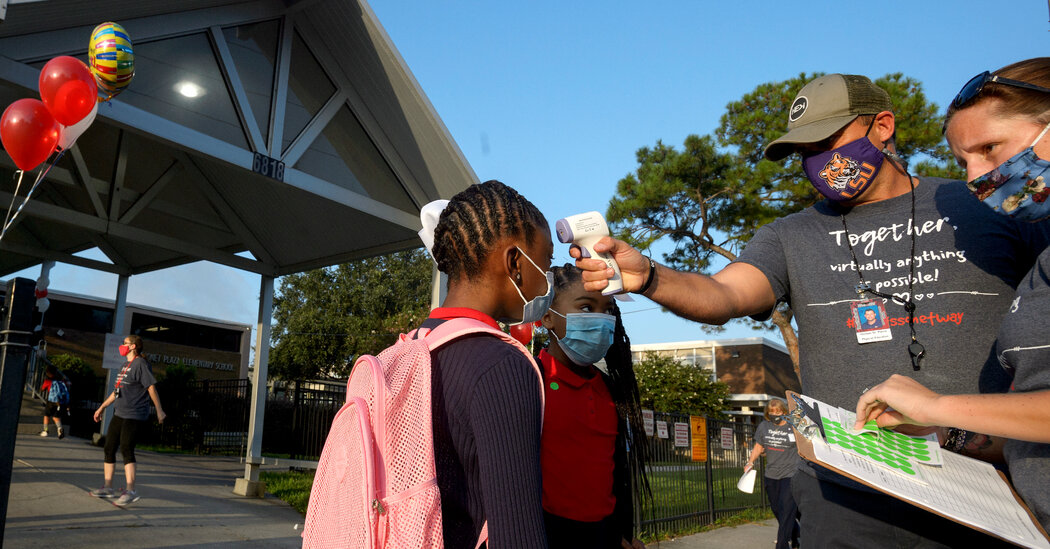Just under 3 percent were Asian, and about 10 percent were listed as “other” or multiracial. Fewer than 1 percent of the children were American Indian/Alaskan Native or Native Hawaiian/Pacific Islander.
[Like the Science Times page on Facebook. | Sign up for the Science Times newsletter.]
Two-thirds of the children had no pre-existing medical conditions before the onset of MIS-C, though the proportion of those who were obese was slightly higher than in the general population. The most common symptoms were abdominal pain, vomiting, a skin rash and diarrhea.
While children over all have been less severely affected by the disease, there was a 21 percent increase in confirmed infections among children between the second and third weeks of August, according to the American Academy of Pediatrics.
The academy estimates children represent 9.5 percent of all cases in states that have reported positive tests by age, with 476,439 confirmed infections in children, among the six million Covid-19 cases in the United States. (The definition of child varies from state to state, but is usually 18 and under, or under 18.)
Since the vast majority of children infected with the virus have a mild or asymptomatic illness, many cases may have been missed earlier this year, when testing was scarce and limited to the very ill, said Dr. Alefiyah Malbari, an assistant professor of medicine at the Icahn School of Medicine at Mount Sinai in New York.
When parents called their pediatricians and said their children had symptoms, “Our line was, ‘This could be Covid — quarantine yourself as if you had Covid,’” Dr. Malbari said. “Even the playgrounds were closed, so it was easy to do.”
Now, with schools opening and testing more widely available, “we have to take these symptoms really, really seriously.”



